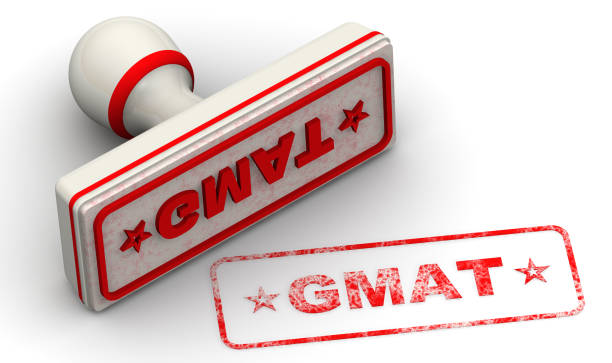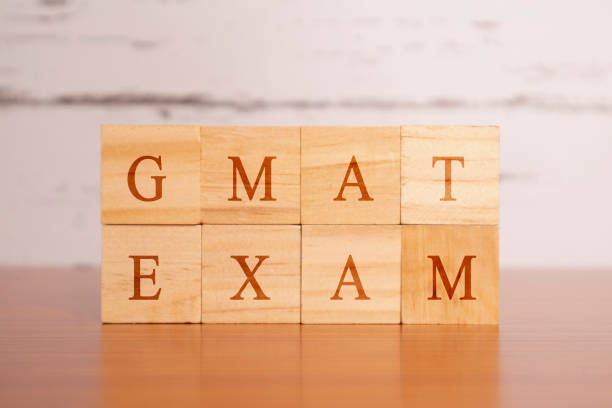How Long Is the GMAT?
Students preparing for business school sometimes ask, “How long is the GMAT?”
Students who have spent several months and approximately 100 hours studying for the GMAT are likely curious about the length of the exam. As you plan your next steps toward obtaining a graduate business degree, the article will help you comprehensively to answer your quest on; How long is the gmat.
A Brief Overview of the GMAT

The Graduate Management Admission Test, also known as the GMAT, is a crucial component of your admission to business school. This extensive, computer-adaptive, standardized exam is likely a requirement for the MBA program to which you are applying.
This test demonstrates to business schools that you are dedicated and that you have the aptitude to succeed in business school. So why is the GMAT important? A high score on this examination will give your business school application the push it may need.
The GMAT consists of four components that assess critical reasoning and analysis. This will have a direct bearing on the talents you will employ in your MBA training. This evaluation evaluates mathematical, algebraic, geometric, multi-source data analysis, and grammatical skills.
It also evaluates your ability to analyze and evaluate written information. The focal point of this evaluation is critical thinking and problem-solving through logic.
How Long is the GMAT Exam?

For students who want to be conscious of How long is the gmat.A keen Cognizance should be on the following: Analytical Writing Assessment (AWA), Integrated Reasoning (IR), Quantitative (Q), and Verbal are the four sections of this examination (V). Including breaks, the duration of the GMAT is 3 hours and 23 minutes. You must arrive 30 minutes early for check-in purposes prior to your examination time slot.
Each component has its own time restriction, and you can choose the order in which you complete the test from three alternatives at the beginning of the exam. The three available options are as follows:
- Assessment of Analytical Writing, Integrated Reasoning, Quantitative and Verbal
- Assessment of Verbal, Quantitative, Integrated Reasoning, and Analytical Writing
- Assessment of Quantitative, Verbal, Integrated Reasoning, and Analytical Writing
GMAT Sections & Times
Because the examination is divided into four portions, each section has its own time limit. It is essential to consider these timeframes when studying for this examination. Practicing the exam in the many available orders could help you determine the optimal order.
Analytical Writing Evaluation
The analytical writing assessment component of the GMAT may be taken as the first or last section, depending on the order in which you take the sections. In this section of the exam, you have thirty minutes. This phase evaluates your writing skills by presenting you with a paragraph-long argument.
Instead of providing your perspective on this subject, you will be required to analyze the author’s thought process and logic. This section’s fundamental purpose is for the grader to determine whether or not you can examine and criticise an argument using organization, logic, and transitions. This appears to be a difficult assignment to perform in under thirty minutes; consequently, practice is required!
Combined Reasoning
The section on integrated reasoning contains a total of 12 questions. This segment will also provide you 30 minutes of time. Again, depending on the format you select, you will have a choice regarding the timing of this section throughout your test session.
In this section, you will be asked to respond to multiple-source reasoning, table analysis, visual interpretation, and two-part analysis questions. The fundamental objective of this section, according to The Economist Group, is to cognitively analyze and integrate information delivered in various media.
Two-part analysis questions are typically lengthy and require you to select many correct answers from a group. This emphasizes your ability to assess any given circumstance with great attention.
Multiple-source reasoning questions provide three tabs to traverse while requiring the use of critical reasoning skills to solve questions.
Questions about graphic interpretation are precisely what they sound like. You will be given a visual, such as a graph, and asked to interpret its significance. In this question type, you will be presented with three options and must select the best answer for two questions pertaining to a single visual.
In order to answer three questions, table analysis questions allow you to sort through required and unneeded facts. The most important component of this section is familiarizing yourself with the various graphic representations of these topics. Even though the questions are all multiple-choice, it is crucial that you carefully follow the directions and keep track of the time.
Quantitative
Along with the verbal test, the quantitative section of the GMAT is one of the most time-consuming sections. The GMAT quant time runs 62 minutes, boasting around 14-15 data sufficiency questions and 16-19 problem solving questions. This part contains a total of 39 questions, with approximately 1.5 minutes allotted per question.
As with the previous sections, test-takers have the option of tackling this section first, second, or third. Due to the difficulty of this portion, it is essential that you practice answering these questions within the allotted time frame. As mentioned in the previous section, try taking the evaluation in each order to determine which one best suits your needs.
Data sufficiency questions give you with a question and two distinct data statements in this part. The objective is to determine if the statements provide sufficient evidence to answer the questions. Due to the time constraints, these question styles require test takers to swiftly identify essential information.
Problem solving questions replicate traditional standardized exam questions. These multiple-choice questions will present you with five options, and you must demonstrate your quantitative and critical reasoning skills through your mastery of elementary mathematics.
Verbal
The lengthiest portion of this evaluation is the spoken segment. Test takers are given 65 minutes to complete 36 total questions. These questions assess reading comprehension, thinking ability, and sentence repair.
The purpose of this section is to demonstrate your proficiency in written English, critical reading, and argument analysis. For each of the 10 questions assessing critical reasoning, you must read a series of statements and answer a corresponding question. For the 14 sentence correction questions, you will be required to determine whether or not some lengthy and complex sentences include errors. Finally, 12 reading comprehension questions will evaluate your knowledge of the text’s content, organization, and author’s perspective. Each reading passage will be accompanied by three to four questions.
Things to Carry on the Exam Day

According to the Graduate Management Admission Council, GMAC, all GMAT candidates must adhere to the regulations regarding what they may bring to the test center. Here is a comprehensive list of items you must bring with you on the day of your GMAT exam:
1. Approved photo identification copy: Carry a copy of a photo identity that has been approved by the GMAT. If you fail to provide a valid ID or if it does not fulfill the requirements mentioned in the prerequisites, you will not be permitted to take the examination. According to GMAC, a photo identity document should have the following elements:
- Your name is composed of Roman letters. It should be spelled exactly as you did when filling out the GMAT examination application form.
- The date of birth must match the information provided on the application.
- A recent snapshot.
- Digital signature.
2. It may also be the formal, official email that you received from Pearson VUE. Using the application confirmation, you can clear up any misunderstandings regarding the exam day or time.
3. Bring the names of the three business schools to which you wish to send your GMAT scores. You are permitted to send your GMAT scores to five programs.
4. Prescription eyeglasses may be worn during the examination.
5. Light sweater or other comfy items to wear while writing the exam.
6. If you want additional assistance or support due to a physical disability, you must obtain prior approval from the test center.
FAQs On How long is the gmat
Is it hard to get 700 on GMAT?
In general, getting 700 on GMAT is hard. It requires an incredible amount of preparation and skill. You'll need to solve tough math problems, apply advanced grammar rules, and extract meaning from dense text and data. 88% of people taking the GMAT score less than 700.
Is the GMAT a difficult exam?
GMAT is taken by more than 200,000 people annually and only 6% of the total takers score 720 or more. What we can understand from these data points is that GMAT is a hard exam and it takes effort to score 700+.
How hard is it to get 800 on GMAT?
So, we can see why, according to the Graduate Management Admissions Council, fewer than 50 people out of the over 200,000 people who take the GMAT each year score a perfect 800. Getting all the questions on the GMAT correct is not easy. At the same time, with the right mindset, it is doable.
What GMAT score do I need for Harvard?
The GMAT score which is between 650 to 690 is considered good but for top-ranked universities such as Harvard University, IIM Bangalore, and Stanford University you will need a score of 730+.
How long do most people study for the GMAT?
studying for the GMAT takes time. Plan to spend about two to three months and 100–120 hours reviewing material and practicing regularly. The top scorers on the GMAT spend 120+ hours, on average, studying for Test Day over a period of time.

